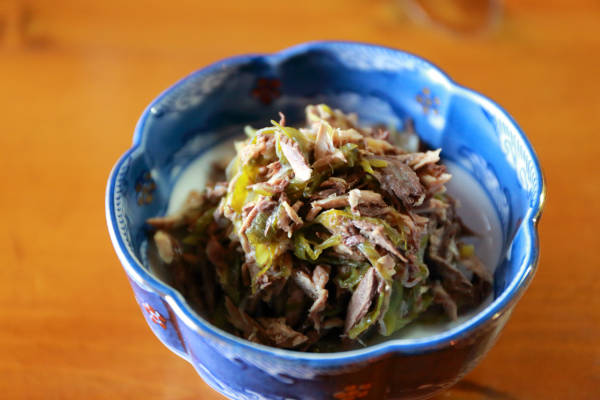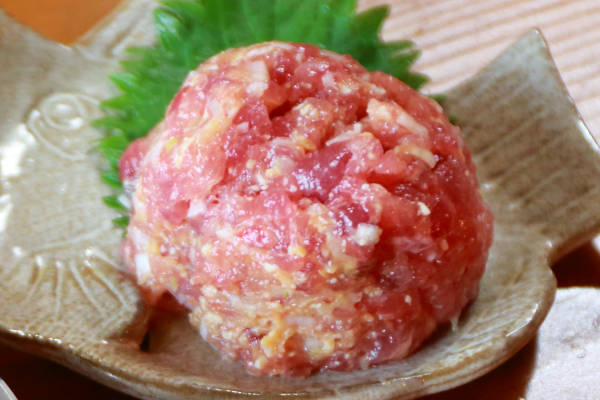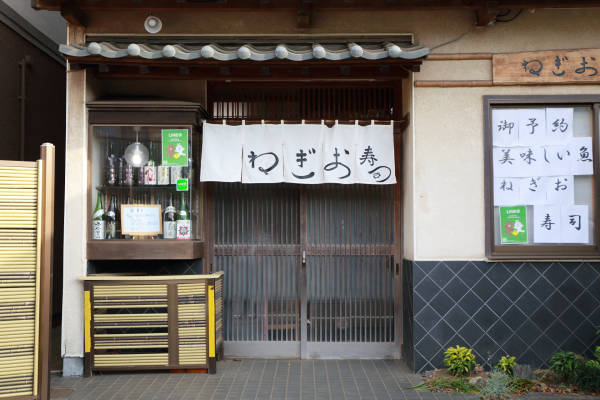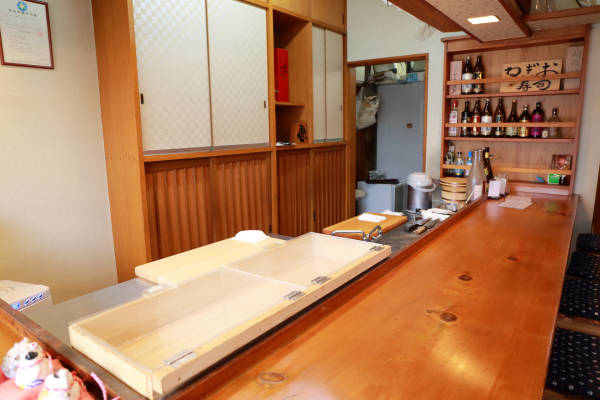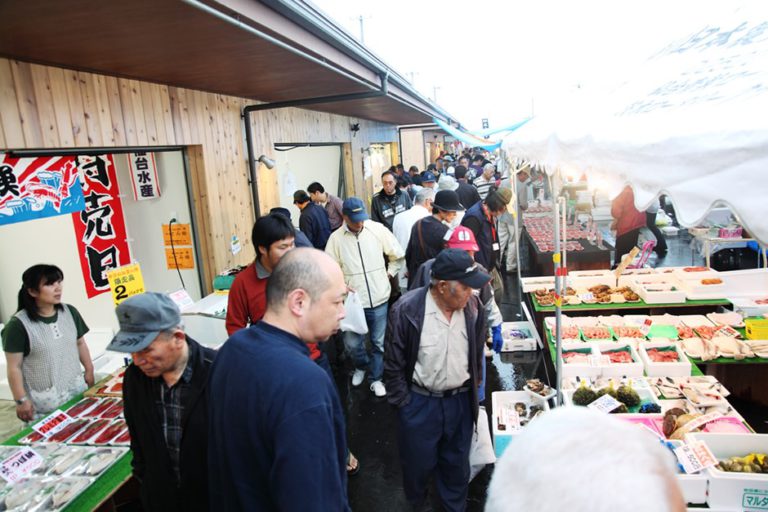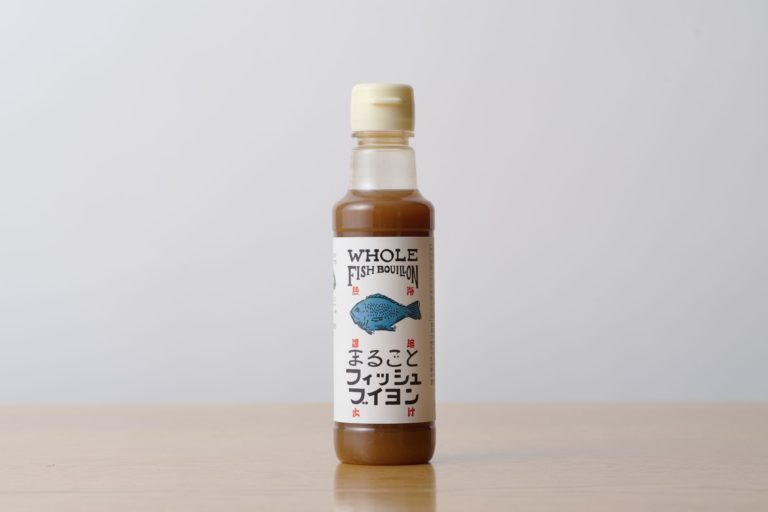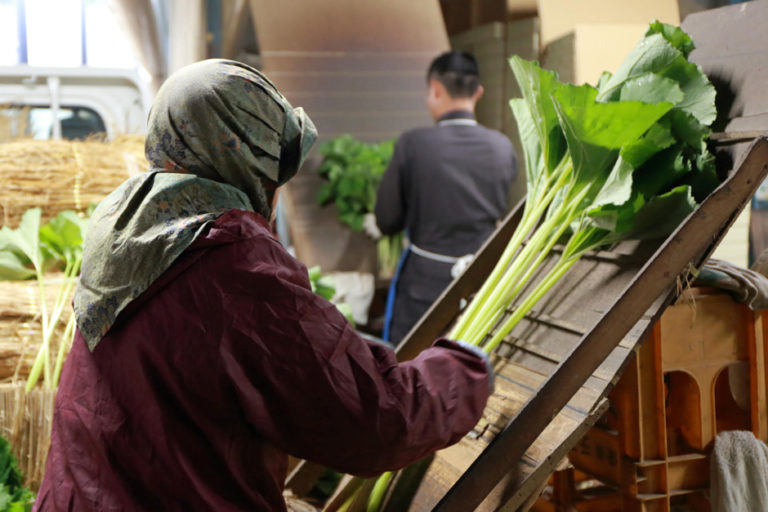The Fascinating Charm of Katsuo (Bonito), in Season Twice a Year

The exquisite taste of the first bonito of the season, deeply rooted in the Edo townspeople culture
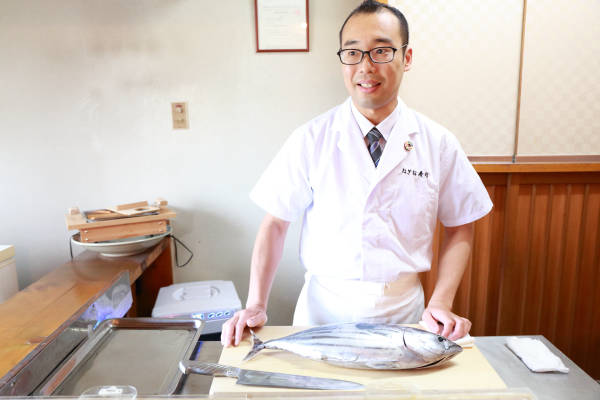
Bonito can be caught in waters relatively close to Japan’s shores, and the fish is in season twice a year. The first bonito of the season (hatsu-katsuo) is on the market from spring to early summer, and the returning bonito (modori-katsuo) can be seen in autumn. We asked Negishi the differences between the first and returning bonito.
“Bonito is a migratory fish species. The first bonito of the season is the bonito that migrates north from the southern seas in search of food. This is why the months in which the fish are caught differ between ports—catching the first bonito of the season peaks around March to April in Makurazaki, Kyushu or in Kochi Prefecture, around June at Katsuura, Chiba Prefecture, and around July in areas such as Miyazaki Prefecture.”
Young bonitos born in the tropical area around Micronesia form schools and ride on the Kuroshio Current, which offers a rich supply of food for the fish. The current takes the schools of bonito up north on the Pacific coast side of Japan. The fish at this point do not have much fat on their bodies, but their leaner condition makes them perfect for processing into dried bonito shavings.
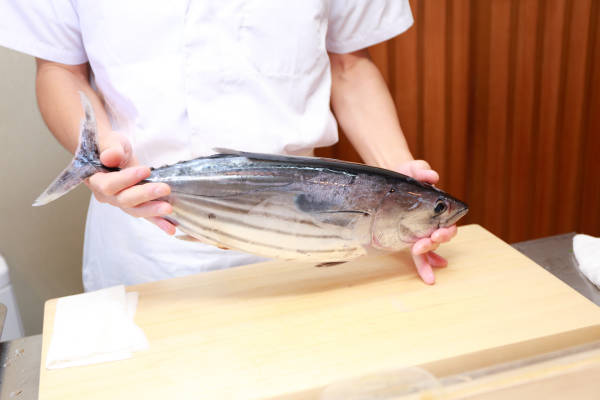
After the schools of bonito feast, grow and reach the mixed current area where cold Oyashio Current meets the Kuroshio Current, they stop traveling north and start making their way back to the tropics to spawn. Bonito traveling southward offshore the Sanriku area to the Boso Peninsula can be seen from mid-September to late October. This is the second bonito season and these fish are called “returning bonito.”
“As the bonitos’ life cycle is like this, the returning bonito are fatty and tasty. We recommend lightly roasting bonito and serving it with condiments. However, the first bonito of the season was also valued in the Edo townspeople’s culture, as they liked anything that was first. The first bonito of the season features a fresh fragrance and a lighter taste, although it is a red-fleshed fish.”
Selecting good bonito
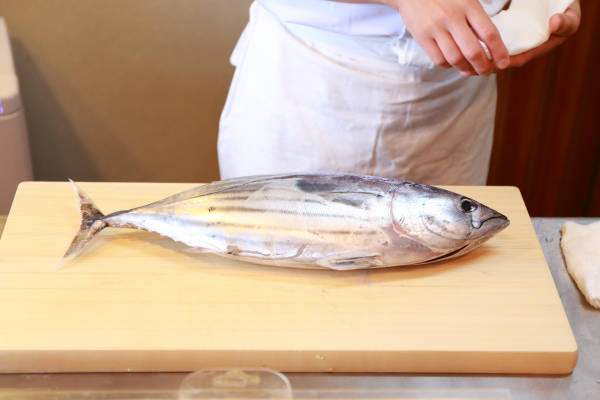
We also received tips on selecting tasty bonito.
“Smaller fish are more expensive for the first bonito of the season, because there is greater value of having a fish with a youthful scent. When selecting a whole fish, choose one that weighs one to two kilograms and has a relatively smaller face when compared to the body. Fish with a streamlined and tapered tailfin are younger and more muscular. Next, check the freshness of the fish. Fresh fish should have clear eyes and the color of their gills should be bright red. Bonito that have been caught by pole-and-line fishing and handled with care have no damage on their bodies, making them perfect for sashimi.”
When selecting fish in blocks, choose blocks that are firm and have a fresh red color.
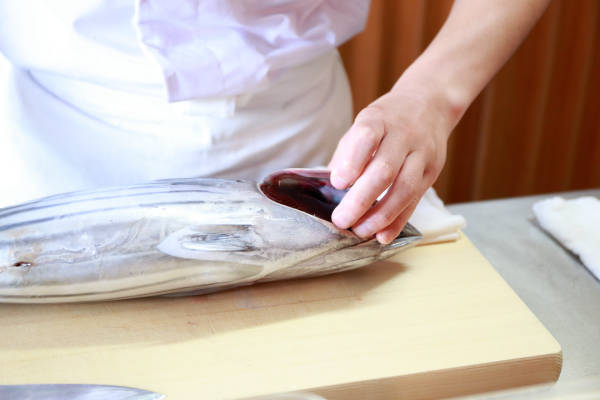
“Actually, fresh bonito have a slightly dull color right after being cleaned and cut. However, as the flesh comes in contact with air, it turns a brighter red hue before turning a black color as its freshness diminishes. So, there should be no problem if the flesh seems a slightly dull color right after being freshly cleaned and cut at a fish section of a store.”
Furthermore, we believe that many people do not distinguish between purchasing back or belly flesh when purchasing blocks at stores.
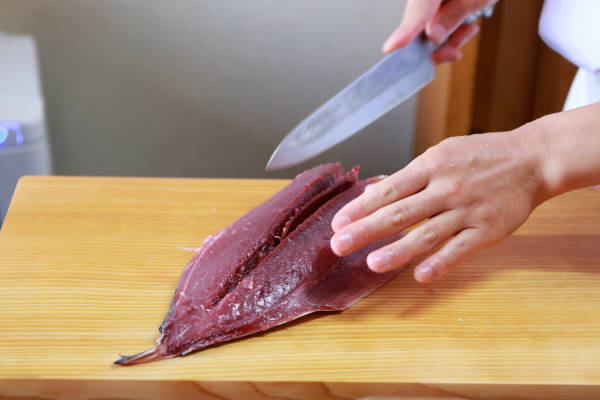
“Fish meat blocks of the belly area are hollow where the organs used to be. Fatty belly flesh has a richer taste, and the flesh from the back of a fish has a milder flavor. I recommend comparing the two if you can,” says Negishi.
One point of caution is the dark meat where the flesh is dark red on the fish. Dark meat has a strong fragrance and an umami flavor for a fish, but to fully experience the fresh taste of the first bonito of the season as sashimi, it is recommended that this dark meat be cleaned off the fish as much as possible. However, according to Negishi, the dark meat area offers the richest amount of nutrients, such as iron.
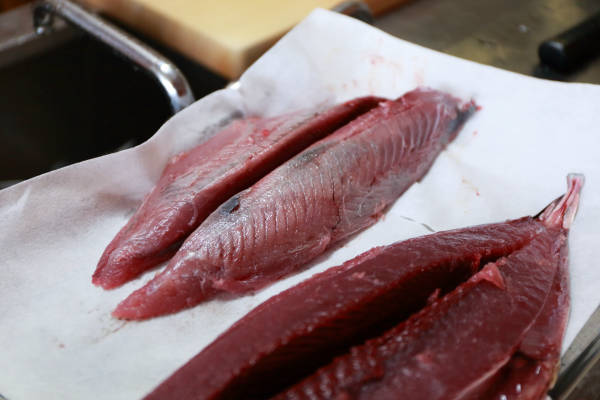
For this article, Negishi has recommended a few recipes that bring out the tastiness of bonito, including the dark meat area.
How to enjoy the first bonito of the year

It is highly recommended to enjoy the delicate taste of the first bonito of the year by eating it raw.
When preparing a block of fish, Negishi recommends placing it on a paper towel and lightly sprinkling it with salt before wrapping with plastic wrap and chilling it in the refrigerator. Doing so will remove any fishy odor along with moisture and create a more viscous texture.
Ordinary salt can be used for pretreating the fish, but how about imitating the Edo-style sushi chefs and treating the fish with a selected, favorite salt of yours? Here are three salt types that Negishi recommends.
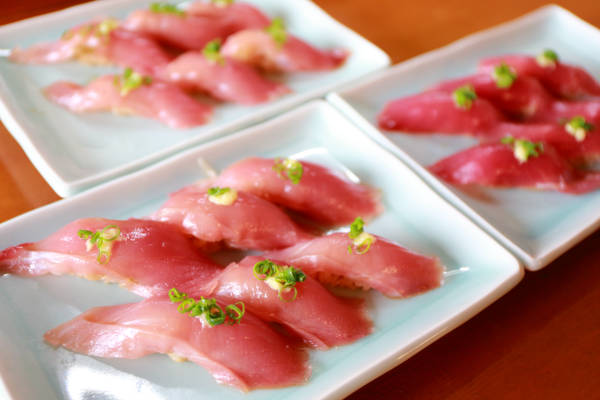
(1)Black Himalayan rock salt: Its mountainous fragrance containing sulfur is absorbed into the fish meat, canceling out any fishy odor.
,
(2)Red salt from the Andes: The red color in this type of salt is iron content. Bonito also has red flesh with chromoprotein components from iron called myoglobin, making it a good match with red salt.
,
(3)Unrefined salt: Unrefined salt contains various minerals and brings out the depth of the bonito taste.
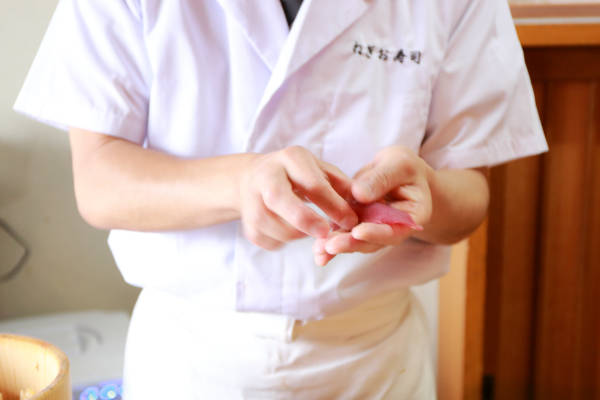
Bonito pretreated with salt also complement vinegared rice prepared for sushi much better. Negio-zushi offers red sushi rice created with 100% red vinegar (vinegar created from fermented saké lees). Bringing out maximum fragrance and flavor of fish is the Negio-zushi way.
Enjoy different tastes of bonito according to the season. How about selecting bonito according to Negishi’s hints and trying out his recommended recipes for the seasons as well?
Bonito
Source:Negio-zushi Kazuya Negishi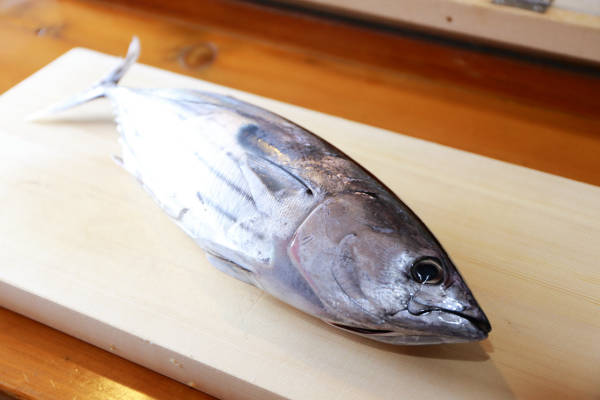
Peak Season
March to July: First bonito of the season
September to November: Returning bonito
Tips
・Whole fish: Select fish with a relatively smaller face compared to the body, clear eyes and a red color within the gills
・Block of fish meat: Select blocks that are firm with a fresh red color.

